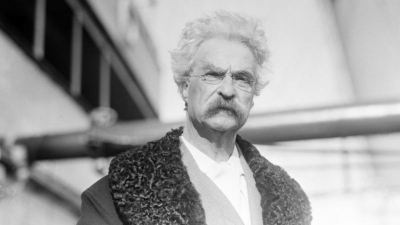
Mark Twain worked as an apprentice pilot on a steamboat named Pennsylvania, on the Mississippi River. He got his pilot license in 1859.
Twain’s pen name comes from a nautical phrase that means ‘two fathoms deep,’ which is safe depth for a steamboat to ply.
This part of Mark Twain’s life had a huge impact on his greatest writing, and it was in this time that he obtained the material he needed to write Life on the Mississippi. Reading through the book, it is obvious how much respect Twain has for the river itself. This is evident through the ways in which he describes its incredible size, and at the same time its minute complexities. His detailed descriptions and picturesque use of language within Life on the Mississippi serve to prove to Twain’s audience that he is indeed a serious and well spoken author. It is obvious that Twain affinity for the river itself is the source and backbone of this book, while Twain also manages to bring out the eccentricities of not only the river, but also of the people who populate it. These stories of workers, farmers, and steamboat captains serve to bring the novel alive for the audience.
Twain earned a great deal of money from his writings and lectures, but he invested in ventures that lost most of it—such as the Paige Compositor, a mechanical typesetter that failed because of its complexity and imprecision. He filed for bankruptcy in the wake of these financial setbacks, but in time overcame his financial troubles with the help of Henry Huttleston Rogers. He eventually paid all his creditors in full, even though his bankruptcy relieved him of having to do so. Twain was born shortly after an appearance of Halley’s Comet, and he predicted that he would “go out with it” as well; he died the day after the comet made its closest approach to the Earth.
Picture Credit : Google




